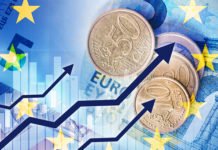China wants to grow 5% this year, create around 12 mio jobs in the urban area and print a 3% inflation. Targets are ambitious – especially the inflation target – given that the base effect will not play in favour of growth this year and deflation is not an easy battle to win – especially in a context of lost confidence, aging – and shrinking – population and a severe property crisis. Of course, the Chinese Premier said that he will need policy support to achieve his goals. He does, indeed, need a lot of support and even then no one guarantees the return of investment and spending. The market reaction is mixed; the CSI 300 extended gains today, while Hang Seng was pulled down by more than 2.5% due to steep losses in mainland stocks. Caixin PMI printed an unexpected slowdown in the expansion of Chinese services in February, while Tesla tumbled 7% yesterday after announcing that its shipments from the Shanghai mega factory slumped to the lowest levels in a year due to a dull activity during the Lunar Year Holiday and renewed price competition in the EV market.
While Tesla was sliding a big 7%, Nvidia was busy traveling through uncharted territories. The company added another 3.50% yesterday and stole the title of the world’s ‘3rd biggest company’ from the Saudi Aramco. Some compare the Nvidia’s rise to Tesla-mania back after 2020, when Tesla was growing 50% a year and we thought nothing could stand on the path of Elon Musk in replacing every single car out there with a Tesla. But today, the sales growth slows, the competition eats into the company’s profit margins, shareholders are not happy – beyond the fact that Elon Musk is cooking unpleasant stuff outside Tesla, and the shares are under a decent selling pressure. It’s certain that Nvidia will experience its own down-moment and face its own challenges. But as Tesla example shows, there is not a price level that will bring investors back to earth.
Elsewhere, Apple fell free yesterday after the EU imposed a $2 billion penalty on accusations that Apple’s platform unfairly marginalized competitors in the music-streaming industry, including Spotify. But I believe Apple’s biggest problem today is it’s late arrival in the AI, and the struggling business in China. Price-wise, yesterday’s fall broke the $180pb support. The next crucial support stands at $171 per share, the major 38.2% Fibonacci retracement on the positive trend forming since the beginning of last year, and which should distinguish between the actual positive trend and a medium-term bearish reversal.
Zooming out, the S&P500 timidly advanced to a fresh record but closed the session slightly down. Investors – except for the Nvidia investors – didn’t necessarily wanted to take a clear direction before Federal Reserve (Fed) Chair Jerome Powell’s semiannual testimony before the Congress on Wednesday and Thursday. In this testimony, Powell will likely ask for more patience regarding the timing of the first rate cut, he will probably say that inflation is on the right path but that they don’t want to lower their guard too early. The US 2-year yield settled around the 4.60%, while the 10-year yield is back to 4.20%. Many now say that ‘4.5% is the new 5%’ and that buying the 10-year paper at 4.5% is interesting as the yield will probably not go above this level given the downtrending inflation and the Fed’s plans to cut the rates, even if the first cut can’t come soon enough.
In the FX, the US dollar index is stuck between its 100 and 200-DMA before Powell’s speech and a series of jobs data from the US this week. The EURUSD sees resistance into its 50-DMA, the USDJPY consolidates above 150, while gold is on an impressive rally since last Friday on rising safe haven demand before Powell’s speech. The rising geopolitical tensions are also shown as a potential reason for the recent rally but the geopolitical tensions are here for a while and they are probably not the major driver of the past couple of days’ move. So I stick to the safe haven demand narrative before Powell’s speech. The thing is, a dovish tone from Powell should pressure the US yields lower, decrease the opportunity cost of holding the non-interest-bearing gold and help gold extend gains. But low yields on the other hand will also boost risk appetite and encourage investors to abandon their gold holdings to opt for riskier but better yields assets. Therefore, I think that the upside potential in gold could be limited if the Fed cut bets are what’s driving the gold prices higher these days.
A last word for oil, US crude failed to extend gains above $80pb even after the Chinese stimulus bets. As I was saying, OPEC will hardly push the price of a barrel sustainably above that level when non-OPEC countries pump to make up for the supply cuts.














